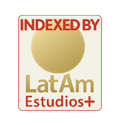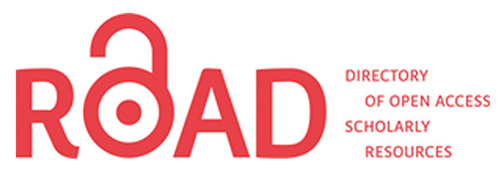Luminous Projections and The Teaching of Cosmography
imaginary, Ideal and Mechanical Figures at The CNBA
DOI:
https://doi.org/10.24215/24691488e118Keywords:
glass plates, photography, luminous projections, high school education, astronomyAbstract
The article analyzes some glass plates used in the cosmography classes at the Colegio Nacional de Buenos Aires between 1912 and 1949. These plates reproduced drawings, paintings, and photographs related to astronomy that circulated in important scientific institutions of the time. Some plates, labeled imaginary, depicted objects inaccessible to direct observation, such as the interior of the Sun or the craters of the Moon. Others, offering photographs of the lunar landscape, were consigned as ideal. The article historically explores the use of imagination in the creation of these astronomical images, highlighting the combination of observation with disciplined imagination, and emphasizing the complementarity between photographic practices and the artistic techniques of drawing and painting.Downloads
References
Bigg, C. (2018). On Blurs, Maps and Portraits. Photography and the Moon [Sobre Desenfoques, Mapas y Retratos. Fotografía y la Luna]. En C. Pérez González, Selene’s Two Faces. From 17th Century Drawing to Spacecraft Imaging [Las Dos Caras de Selene. Del Dibujo del Siglo XVII a la Imagen de la Nave Espacial] (pp. 114-146). Koninklijke Brill NV.
Bredekamp, H., Dünkel, V. y Schneider, B. (2015). The Technical Image: A History of Styles in Scientific Imagery [La imagen técnica: la historia de los estilos de la imagen científica]. University of Chicago Press.
Bucari, A. (2021). Xul Solar: perspectivas historiográficas e imagen técnica. Armiliar, (5), e035-e035.
Buck-Morss, S. (2009). Estudios visuales e imaginación global. Antípoda. Revista de antropología y arqueología, (9), 19-46.
Crowe, M. J. (1986). The Extraterrestrial Life Debate, 1750-1900: The Idea of a Plurality of Worlds from Kant to Lowell [El Debate sobre la Vida Extraterrestre, 1750-1900: La Idea de una Pluralidad de Mundos desde Kant hasta Lowell]. Cambridge University Press.
Daston, L. & Galison, P. (2007). Objectivity [Objetividad]. MIT Press.
Galilei, G. [1610] (1964). El mensajero de los astros. Eudeba.
Lankford, J. (1997). History of Astronomy: An Encyclopedia [Historia de la Astronomía: una enciclopedia]. Routledge.
Meyer, W. (1890). The Urania Gesellschaft [La Sociedad Urania]. Publications of the Astronomical Society of the Pacific, II(9), 199-214.
Nasim, O. (2018). James Nasmyth on the Moon. Or on Becoming a Lunar Being, without the Lunacy [James Nasmyth en la Luna. O sobre convertirse en un ser lunar, sin ser lunático]. En C. Pérez González, Selene’s Two Faces. From 17th Century Drawing to Spacecraft Imaging [Las Dos Caras de Selene. Del Dibujo del Siglo XVII a la Imagen de la Nave Espacial] (pp. 147-187). Koninklijke Brill NV.
Pineda, N. (2017). Selenographies in the Seventeenth Century: Making, Publishing and Copying Maps of the Moon [Selenografías en el siglo XVII: haciendo, publicando y copiando mapas de la luna]. [Tesis de doctorado, Queen Mary University of London]. https://www.qmul.ac.uk/library/open-research/theses/thesis-collection/
Reeves, E. (1997). Painting the Heavens: Art and Astronomy in the Age of Galileo [Pintando los Cielos: Arte y Astronomía en la Era de Galileo]. Princeton University Press.
Rieznik, M. (2011). Los cielos del sur. Los observatorios astronómicos de Córdoba y de La Plata, 1870-1920. Prohistoria.
Rubio, M. (2024). Imágenes del paisaje lunar entre la ciencia y el arte. [Tesis doctoral, Instituto de Investigaciones Estéticas, FFyL, UNAM]. https://tesiunam.dgb.unam.mx/F/26EYS8BBNVYSRCQ1DX2M3Q3D87X8QS5HF215HNIYVRSVDU4ACY-08421?func=full-set-set&set_number=048917&set_entry=000001&format=999
Sheehan, W. (1988). Planets and Perception: Telescopic Views and Interpretations, 1609-1901 [Planetas y Percepción: Vistas e Interpretaciones Telescópicas, 1609-1901]. University of Arizona Press.
Weinek, L. (1890). Drawings of the Moon [Dibujos de la luna]. Publications of the Astronomical Society of the Pacific, II(10), 143-152.
Downloads
Published
How to Cite
Issue
Section
License

This work is licensed under a Creative Commons Attribution-NonCommercial-ShareAlike 4.0 International License.
The acceptance of the manuscript by the magazine means the non-exclusive cession of the property rights of the authors in favour of the editor, who allows the reuse, after publication (post print), under a license Attribution-NonCommercial-NoDerivatives 4.0 International. According to these terms, the material can be copied and redistributed by any means or in any format as long as a) the author and original source of the publication are quoted (magazine and URL of the work), access to the license is provided and whether changes have been made is mentioned; and b) the material is not used for commercial purposes.
The cession of non-exclusive rights means that after the publication (post print) in Arte e Investigación the authors can publish their work in any language, means and format; in such cases it must be mentioned that the material was originally published in this magazine. Such cession also means the authorization of the authors for the work to be collected by SEDICI, the institutional archive of the National University of La Plata, and to be spread in the databases that the editorial team considers appropriate to increase the visibility of the publication and its authors.
Moreover, the magazine encourages the authors to deposit their productions in other institutional and thematic archives under the principle that offering the society the scientific and academic production without any restrictions contributes to a greater exchange of the global knowledge.

































